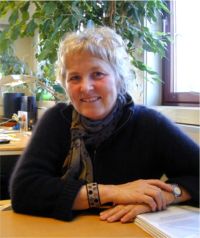Timing and tactics
A gender researcher in the Senate, an innovative gender equality adviser, new tactics and good timing. These factors were instrumental when the University of Oslo passed a new gender equality action plan.

In January 2003 the EFTA Court ruled that Norwegian universities could no longer earmark professorships for women. Earmarking had been one of the most important means of recruitment of women into disciplines with few women in top positions.
"I had already been crying out for gender equality for a long time in the Senate. When earmarking disappeared, Rector Arild Underdal argued that we had to rethink our strategies. Could the EFTA verdict possibly lead to a revitalization of the gender equality work?", says Harriet Bjerrum Nielsen, Professor in women’s and gender research and pedagogy at Centre for Women’s Studies and Gender Research, and a member of the University Senate since 2002.
No accusations
"The universities are historically built by men. And in the academic world there is a strong notion that research quality is neutral, independent from the individual, from gender or what have you. Because of this, questioning the neutrality might be especially provoking in this sector. Thus, we chose not to challenge the meritocratic way of thinking. Rather than ascribe poor intentions to people, and accusing them of blatant discrimination, we tried to make them see that the concept of competence could be defined in broader terms," Bjerrum Nielsen tells.
By ’we’ she means a working group that was established in the spring of 2003, assigned to clear the path for a new action plan.
Academic language
"The University gender equality adviser picked out the members of the working group, and I think this was crucial. The group was put together with diversity in mind, including gender, faculties and teaching level. Also all the members had shown an interest in gender equality work."
"We deliberately used the language of the academic sector and it’s respect for research. Rather than saying ‘we think…’ and ‘we feel…’, we based our statements on research."
One of the research reports used by the group was the results of the Danish project ‘Gender barriers in higher education and research’ (1996-2002), and Inge Henningsen’s report ‘30 years of status quo? Gender profiles on academic positions in the University of Copenhagen 1970-2001’ (Our translations, reports not available in English). Here Henningsen shows that even if there are now more women with Ph.D.’s, this does not change the structures further up in the system.
"Based on the research we used, I made a matter-of-fact summary, shunning all undocumented allegations or accusations of abuse of power – as not to challenge meritocracy," says Nielsen.
Common goals
A third criteria for success that Bjerrum Nielsen points to, was reminding people that they probably already are in favour of gender equality.
"I trust university employees when they say that they would like to see more women in their departments. The trouble is that they forget this when a position is vacant. Thus, we have changed the arguments around, and chosen to focus on the fact that ‘we all want this’, we’re all on the same team, rather than accusing others of being reactionary. I also believe we had good timing, as there is an increased understanding that losing the talented women will have a negative effect on their research areas."
Think locally
The initial idea was that the gender equality work was to be handled by a special project group. However, external Senate members recommended that the Senate should pass clear strategic goals, and then implement these locally, in the different faculty leaderships. This advice was followed.
"I was disappointed at first, because this meant that the action plan was postponed for six months, and there would be another round of discussions with the faculties. But in hindsight I see that this was the right choice. Having the work done at the local level is possibly one of the most important success factors. Moreover, we focus on several measures that make the faculties see that they, too, have a short-term interest in starting this work."
Economic rewards
The measures are first and foremost economic. There is a pool of NOK 1.8 million (aprox. EUR 230 000) a year from which the faculties can apply to cover meetings, mentorship programmes for female research fellows and similar efforts. In addition, NOK 4 million (aprox. EUR 515 000) will be given each year as a reward to those faculties that do well in reaching their goals of recruiting women. In other words, both money to work for, and rewards for those who make it.
It is the faculties themselves that decide on the specific goals for recruitments, within a framework defined for the University at large.
"We established a principle in the action plan, saying that the appointment rate must always mirror the gender ratio on the level below. This means that if there are 50 per cent female research fellows, there must be 50 per cent women among the associate professors hired. If there are 30 per cent female associate professors, at least 30 per cent of newly hired professors must be women, etc. However, this can be adjusted locally, not all subject areas has 50 per cent female research fellows, and some departments recruit externally."
Forty-sixty
But when can one say that gender equality is reached? At 50-50, or at 40-60, as is established elsewhere?
"We are looking at forty-sixty. The reward money will not be given to disciplines that already have more than 40 per cent women. It is my experience that such a ratio is practical, to avoid discussions. It also gives the departments some leeway; there will not always be the same number of competent male and female applicants in all fields," Nielsen says. "I should add that this cannot be used the other way around. No one gets money to increase the ratio of men towards 40 per cent or more."
Not just numbers
Harriet Bjerrum Nielsen emphasizes that to work for gender equality is not simply a question of numbers.
"For instance, bad things happen in job interviews. I am a member of the appointments committee, and have seen documents which state 'she does not think she has much experience' and 'he felt that he had much experience', thus he is chosen, even if they are of the same age and has the same practical experience! Hence, we are working to develop training programmes for those who do the hiring."
